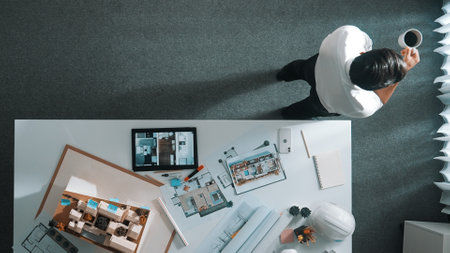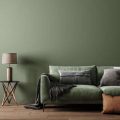Understanding the Roots: British Design Heritage
Modern British interior design is deeply rooted in the nation’s rich history, where tradition forms a foundation for contemporary creativity. To truly appreciate today’s interiors, it is essential to explore the historical influences and classical elements that have shaped British homes for centuries. From the refined elegance of the Georgian era to the ornate charm of Victorian design, each period has left an indelible mark on British interiors. Georgian architecture brought symmetry, balance, and understated sophistication, favouring muted colour palettes and intricate mouldings. In contrast, the Victorian age embraced opulence with lavish fabrics, dark woods, and decorative wallpapers. These historical styles are not merely relics; they continue to inspire modern spaces, blending old-world character with new-age sensibilities.
| Era | Key Features | Influence on Modern Design |
|---|---|---|
| Georgian | Symmetry, sash windows, decorative cornices | Subtle architectural details and neutral tones |
| Victorian | Patterned wallpapers, ornate fireplaces, heavy drapes | Feature walls and statement furnishings |
This enduring heritage shapes how designers approach modern British interiors—balancing respect for classical craftsmanship with a flair for innovation. By understanding these roots, homeowners can make thoughtful choices that reflect both tradition and contemporary trends, ensuring their spaces feel authentically British while meeting today’s standards for comfort and functionality.
2. Embracing Contemporary Trends
Modern British interior design is defined by its ability to evolve, seamlessly blending the best of tradition with contemporary flair. Today’s British homes are spaces where innovation meets heritage, creating environments that are both functional and visually striking. This balance is achieved through the thoughtful use of modern materials, open-plan layouts, and minimalist aesthetics—each element contributing to a fresh yet familiar atmosphere.
Innovative Materials in Modern British Homes
Homeowners and designers across the UK have embraced new materials that bring durability and style without compromising on classic charm. From engineered wood flooring that recalls the warmth of period properties to sleek glass partitions and industrial metals, these materials offer versatility and resilience—perfect for busy family life or urban apartments. The following table showcases popular innovative materials and their traditional counterparts:
| Modern Material | Traditional Equivalent | Main Benefit |
|---|---|---|
| Engineered Wood | Solid Timber | Enhanced stability, easier maintenance |
| Tempered Glass | Leadlight Windows | Maximises light, opens up spaces |
| Powder-Coated Steel | Wrought Iron | Sleek finish, corrosion resistance |
| Sustainable Composites | Natural Stone | Lighter weight, eco-friendly options |
Open-Plan Living: A Shift from Tradition
The move towards open-plan layouts has revolutionised the way British families interact within their homes. Knocking through walls to merge kitchens, dining rooms, and lounges creates airy, sociable spaces ideal for entertaining or everyday living. Yet, British interiors retain their sense of cosiness—often by using clever zoning techniques such as area rugs or subtle changes in wall colour to define each function within the larger space.
Minimalist Aesthetics with a British Twist
Simplicity reigns in modern British design, but always with an eye on character and comfort. Neutral palettes form a calm backdrop for bold art or vintage finds; clutter is kept at bay through built-in storage solutions that echo the clean lines of mid-century design while nodding to traditional joinery skills. The result? Interiors that feel uncluttered yet inviting—a true reflection of contemporary British lifestyle values.

3. Fusing Old and New: Practical Approaches
Blending the timeless charm of traditional British interiors with the innovation of modern design requires a considered approach that honours heritage features while embracing contemporary living. Retaining original architectural elements such as cornices, ceiling roses, or classic fireplaces adds character and authenticity, but integrating these with current technologies and materials is key to achieving a harmonious interior.
Practical Strategies for Integration
- Highlight Period Details: Instead of concealing features like ornate mouldings or exposed beams, use neutral colour palettes or subtle lighting to make them focal points within a modern layout.
- Modern Materials Meet Classic Forms: Pairing sleek glass staircases or steel-framed doors with traditional wood panelling creates visual contrast and depth without compromising the property’s heritage value.
- Smart Technology in Historic Spaces: Discreetly install underfloor heating, integrated sound systems, or smart lighting solutions to enhance comfort and functionality while preserving period aesthetics.
Comparison Table: Blending Tradition with Innovation
| Traditional Feature | Modern Enhancement | Benefit |
|---|---|---|
| Cornices & Ceiling Roses | LED cove lighting | Accentuates detail, adds ambient mood |
| Sash Windows | Double-glazed inserts | Improved insulation, retains classic look |
| Fireplaces | Bioethanol inserts or electric stoves | No chimney needed, efficient heating, safe operation |
Preserving Craftsmanship While Embracing Change
The secret to successful modern British interior design lies in respecting the building’s story while adapting it to present-day needs. By combining expert restoration of original features with thoughtfully chosen contemporary additions, homeowners can enjoy the best of both worlds: enduring elegance and up-to-date convenience.
4. Colour Palettes and Textures
One of the defining features of modern British interior design is its sophisticated approach to colour and texture. Traditionally, British homes have leaned towards muted tones such as soft greys, sage greens, and warm neutrals, creating a calming backdrop that reflects the often subdued natural light found across the UK. These gentle hues are frequently punctuated with bold accents—think deep navy blues, mustard yellows, or vibrant emeralds—introduced through statement furniture pieces, cushions, or artwork. This blend of understated bases with striking highlights ensures interiors remain timeless yet dynamic.
The Role of Texture in British Interiors
Tactile materials are a hallmark of British design, supporting both comfort and visual interest. From plush velvets on sofas to tactile wools in throws and rugs, textures add depth and warmth to living spaces. Layering is key: combining smooth leather armchairs with nubbly linen curtains or pairing sleek wood flooring with shaggy area rugs helps create rooms that feel lived-in and welcoming.
Popular Colour & Texture Combinations
| Base Colour | Accent Colour | Main Textures | Typical Room Application |
|---|---|---|---|
| Sage Green | Burnt Orange | Wool, Velvet | Lounge/Sitting Room |
| Pewter Grey | Mustard Yellow | Linen, Leather | Bedroom |
| Creamy White | Navy Blue | Cotton, Oak Wood | Kitchen/Dining Area |
| Moss Green | Burgundy Red | Tweed, Brass Fixtures | Study/Home Office |
Supporting Comfort and Style Through Choices
The careful selection of colours and textures in modern British interiors does more than just please the eye—it enhances daily life. Muted tones provide a restful atmosphere ideal for unwinding after a busy day, while bold accents inject personality without overwhelming the senses. Meanwhile, the use of tactile materials not only elevates style but also ensures that every room invites touch and relaxation. This thoughtful combination of elements is what keeps British homes feeling both contemporary and enduringly comfortable.
5. Functional Living: Maximising Space in British Homes
British homes, especially those in bustling cities such as London or Manchester, are often renowned for their compact layouts. Modern British interior design excels at blending tradition with smart solutions to make the most of every square foot. The focus is on practicality without sacrificing style, ensuring that even the smallest flat feels open and comfortable.
Space-Saving Methods
To address the spatial challenges inherent to UK properties, homeowners and designers employ a range of clever tactics. Multi-functional furniture is a mainstay—think ottomans with hidden storage, extendable dining tables, or sofa beds that cater to overnight guests. Built-in shelving and fitted wardrobes take advantage of awkward alcoves and under-stair areas, turning unused nooks into valuable storage spots.
Clever Storage Ideas
Another hallmark of modern British interiors is the creative use of vertical space. Wall-mounted cabinets and floating shelves not only save floor area but also add visual interest. Under-bed drawers and over-door racks are popular choices for stashing away essentials out of sight yet within easy reach. Baskets and decorative boxes help maintain a tidy appearance while providing practical utility.
Popular Space-Saving Solutions
| Solution | Description | Best For |
|---|---|---|
| Bespoke Fitted Furniture | Custom-built to fit unique spaces and maximise storage potential | Bay windows, lofts, under stairs |
| Fold-away Desks & Tables | Provide work or dining space when needed; can be tucked away afterwards | Home offices, studio flats |
| Slimline Storage Units | Narrow cabinets or shelves designed for tight corridors and small bathrooms | Hallways, cloakrooms |
| Modular Sofas with Storage | Sofas that include built-in compartments for blankets, books, or games | Living rooms, family rooms |
| Ladder Shelving | Tall, ladder-style shelves that add vertical storage without crowding the room’s footprint | Kitchens, bedrooms, lounges |
By merging these innovative methods with classic British aesthetics—such as neutral tones, natural materials, and time-honoured craftsmanship—modern interiors deliver spaces that are both beautiful and brilliantly functional. This practical approach ensures that every inch serves a purpose, truly embodying the spirit of modern British living.
6. Sustainability and Local Craftsmanship
One of the most significant shifts in modern British interior design is a conscious move towards sustainability and the support of local artisans. As homeowners and designers increasingly prioritise eco-friendly materials, there’s a clear celebration of British-made furnishings and décor, blending tradition with innovation.
The Rise of Eco-Friendly Materials
British interiors are now often defined by their use of sustainable resources. From responsibly sourced woods to recycled metals and glass, designers are mindful of environmental impact at every stage. Paints with low VOC (Volatile Organic Compounds) content, organic textiles such as linen or wool, and reclaimed flooring are now common choices in both urban flats and countryside homes.
Common Sustainable Materials in British Interiors
| Material | Eco Benefit | Typical Use |
|---|---|---|
| Reclaimed Wood | Reduces demand for new timber, minimises waste | Flooring, beams, furniture |
| Bamboo | Rapidly renewable, biodegradable | Blinds, accessories, flooring |
| Organic Wool & Linen | Biodegradable, locally sourced options available | Upholstery, curtains, throws |
| Recycled Glass & Metal | Lowers energy consumption compared to new production | Lamps, worktops, decorative accents |
| Low-VOC Paints | Improves indoor air quality, less harmful emissions | Walls, woodwork, ceilings |
Celebrating British-Made Furnishings and Décor
The resurgence of interest in locally crafted pieces is more than a trend—it’s a statement about heritage and quality. Many British homes now feature bespoke cabinetry from Yorkshire joiners, hand-thrown ceramics from Cornwall, or woven rugs from Scotland. This not only supports local economies but also ensures each piece tells a unique story rooted in British craftsmanship.
Why Choose Local Craftsmanship?
- Quality Assurance: Traditional techniques paired with contemporary design ensure longevity and style.
- Sustainable Supply Chains: Shorter transport distances reduce carbon footprints.
- Cultural Connection: Every item reflects regional history and artistry.
- Bespoke Solutions: Custom-made pieces fit perfectly into both period properties and modern builds.
This growing focus on sustainability and local craftsmanship exemplifies how modern British interior design respects tradition while embracing forward-thinking values—making spaces not only beautiful but responsible as well.
7. Personal Touch: Reflecting Character in British Interiors
Modern British interior design is not just about following trends—it’s about telling your own story within the home. While merging tradition with contemporary elements provides a timeless foundation, it is the personal touches that truly set a space apart. Encouraging individuality, British interiors benefit greatly from curated vintage finds, bespoke joinery, and art that echoes the rich tapestry of British identity. Whether you are drawn to the nostalgia of an antique armchair or the innovation of custom cabinetry, these details bring warmth and authenticity to any room.
Ways to Add Personal Character
| Element | Description | British Example |
|---|---|---|
| Curated Vintage Finds | Mixing antiques or retro accessories with modern pieces for depth and narrative. | A Georgian sideboard paired with a sleek glass lamp. |
| Bespoke Joinery | Custom-built shelving, cabinetry or panelling tailored to your needs and style. | Handcrafted oak bookcases in a reading nook. |
| Art Reflective of British Identity | Selecting artwork that connects with local heritage, landscapes, or culture. | Framed prints of British coastal scenes or works by UK artists. |
| Textiles & Soft Furnishings | Using classic British fabrics such as wool, linen, or tartan for comfort and visual interest. | A Harris Tweed throw on a contemporary sofa. |
| Personal Collections | Displaying collections that reflect hobbies or family history. | An array of vintage teapots on open shelving. |
Embracing Local Craftsmanship
One hallmark of British interiors is an appreciation for craftsmanship. Commissioning local artisans for bespoke furniture or decorative pieces not only supports small businesses but also ensures every item has a unique story. Whether it’s a hand-thrown ceramic vase from a Cornish potter or intricately carved mantelpieces from Yorkshire joiners, these elements ground your home in its locale.
Tips for Infusing Personality into Your Space:
- Edit Carefully: Avoid clutter by selecting only those items with true meaning or aesthetic value.
- Layer Textures: Combine old and new textiles for tactile richness—a hallmark of comfortable British homes.
- Create Vignettes: Arrange groups of objects thoughtfully to tell a visual story on shelves or mantels.
- Mix Eras: Don’t be afraid to juxtapose Victorian detailing with 21st-century lighting for dynamic contrast.
- Proudly Display Art: Hang artworks that resonate with you personally—whether it’s a local landscape painting or modern abstract print by a British artist.
The Result: A Home That’s Uniquely Yours
The essence of modern British interior design lies in balancing respect for tradition with bold self-expression. By incorporating vintage treasures, commissioning bespoke joinery, and curating meaningful art, you’ll create an interior that feels both current and deeply rooted in British character—ultimately reflecting your own life story within every detail.


